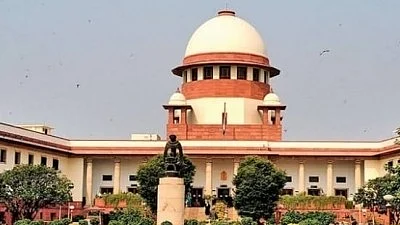After seeking technical clarification from the Election Commission (EC), the Supreme Court on Wednesday, 24 April reserved its judgment on cross-checking all votes.
A bench of Justices Sanjiv Khanna and Dipankar Datta was hearing a batch of petitions that sought complete cross-verification of votes cast through Electronic Voting Machines (EVMs) with the Voter-Verifiable Paper Audit Trail (VVPAT) slips.
VVPAT is an independent vote verification system which enables a voter to check if their vote has been cast properly and went to the candidate that they chose. It does so by generating a paper slip, which is kept in a sealed cover and can be opened in case of a dispute.
Currently, VVPAT slips of five randomly selected EVMs in every Assembly segment are verified.
“Let us see what can be done, if any safeguards needed, we will see what is needed to strengthen the current system,” the apex court observed, according to The Indian Express.
Supreme Court Seeks Clarity From EC
Before reaching the verdict, the Supreme Court bench today sought a few clarifications from the EC officer. Justice Khanna sought to know:
If the microcontroller was in the Control Unit or in the VVPAT
If the microcontroller was programmable
How many Symbol Loading Units were available
Whether the Control Unit was only sealed or VVPAT was kept separately.
"It was said limitation for election petition is 30 days and hence the data was stored for 45 days. But as per Representation of People Act, the limitation period is 45 days. So the period for storage may have to be correspondingly increased?," Justice Khanna asked.
In response, the EC official said that all the three units -- Control Unit, Ballot Unit as well as VVPAT -- have their own microcontrollers. "These microcontrollers are housed in it. They cannot be accessed physically. The one-time program is burnt into them," the official submitted in court.
Justice Khanna also asserted that the source code of EVMs "should never be disclosed" or it can be misused.
In the last hearing on April 18, EC has answered queries on the functioning of EVMs and VVPATs.
During the course of the hearing, which spanned over two days, the EC had submitted in the top court that EVMs are standalone machines and cannot be tampered with, but the possibility of human error cannot be ruled out.
Following this, the Supreme Court had told the petitioners that they "cannot be critical of everything."
"Everything cannot be suspected. You cannot be critical of everything. If they (the ECI) have done something good, you have to appreciate it. You don't have to be critical of everything," the bench told the counsel of one of the petitioners.
On 16 April, the Supreme Court bench had dismissed another petitioner’s idea of returning to the ballot papers. The Opposition too has been demanding 100 percent verification of EVM votes with VVPAT slips.
With inputs from LiveLaw
